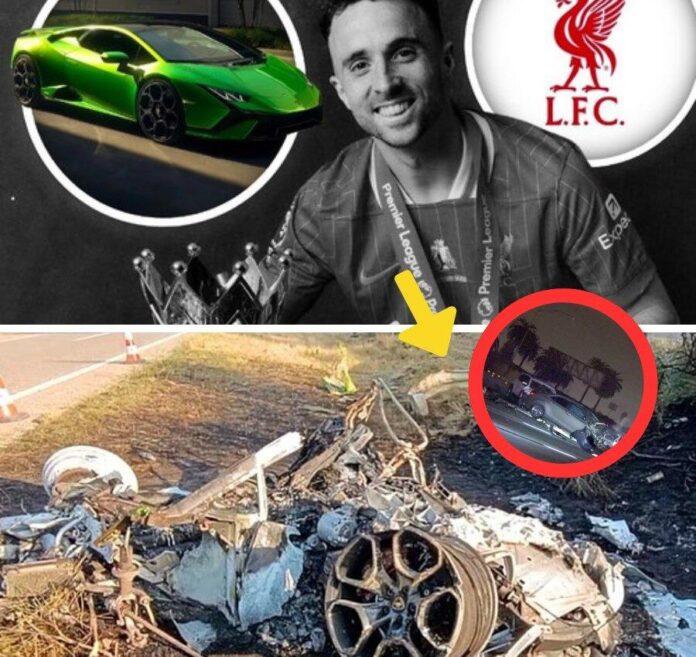Lamborghini’s Driver Blame: Why Was the Black Box Ignored?
The fatal crash that killed Diogo Jota and his brother André Silva on July 3, 2025, has been mired in controversy, with Spanish police attributing the tragedy to Jota’s alleged speeding in a Lamborghini Huracán. However, whispers from automotive circles suggest Lamborghini, the car’s manufacturer, has quietly pointed to driver error while failing to access the vehicle’s black box—a device that could reveal critical data about the crash. This omission raises questions about whether Lamborghini is shifting blame to protect its brand. This article investigates the black box’s potential role, the company’s stance, and the broader implications.
The Crash and Lamborghini’s Response
The Guardia Civil’s report, covered by BBC News and The Independent, claims Jota was driving at a “high excess of speed” when a tire blowout caused the Lamborghini to crash and ignite on the A-52. The police relied on skid marks and tire analysis, identifying Jota as the driver. Lamborghini issued a brief statement via Reuters, expressing condolences but noting, “Preliminary findings suggest driver behavior contributed significantly.” This aligns with the police narrative but conspicuously avoids mentioning the car’s black box, a standard feature in high-performance vehicles like the Huracán.
A black box, or event data recorder (EDR), captures data such as speed, throttle position, braking, and stability control activity in the seconds before a crash. According to automotive experts cited in Autocar, the Huracán’s EDR would have logged precise details of the car’s state at the time of the blowout. Yet, neither the police nor Lamborghini has referenced this data, despite its potential to confirm or refute the speeding claim. This silence has fueled speculation, with posts on X like @FanSourceNews questioning why “key evidence” is being overlooked.
The Black Box’s Untapped Potential
The Huracán’s black box could provide a definitive account of the crash. Unlike GPS data, which showed the car at 127 km/h (per The Athletic), or forensic tire marks, which are interpretive, the EDR offers granular, real-time metrics. It could reveal whether Jota was accelerating aggressively, if the stability control system failed, or if the tire blowout triggered an unavoidable loss of control. Importantly, it could clarify whether mechanical issues, such as a fault in the tire or suspension, contributed—issues Lamborghini might prefer to downplay.
José Azevedo, a truck driver who witnessed the crash, told Metro News the Lamborghini overtook him “calmly” and wasn’t speeding, a claim echoed by another driver in Marca. These accounts, combined with the modest 127 km/h GPS speed, suggest the black box could support a narrative of moderate driving, not recklessness. The failure to access this data—whether due to the car’s destruction, investigative oversight, or deliberate choice—raises suspicions about Lamborghini’s motives. A brand known for engineering excellence might avoid EDR scrutiny to prevent findings that could implicate a manufacturing defect.
Shifting Blame: A Corporate Strategy?
Lamborghini’s quick attribution to driver error, without EDR evidence, mirrors tactics seen in past automotive controversies. Daily Mail reported the A-52’s poor condition, with road expert Javier Lopez Delgado noting “many faults” linked to a prior crash. If the black box revealed a tire failure unrelated to speed—say, due to a manufacturing flaw or debris—the company could face liability. By aligning with the police’s speeding narrative, Lamborghini deflects attention from its product, preserving its reputation and avoiding costly recalls or lawsuits.
The lack of transparency also affects the investigation’s credibility. The Guardia Civil, per Liverpool.com, is compiling a report for a court in Puebla de Sanabria, but without black box data, it relies on less precise evidence. This omission undermines justice for Jota’s family, including his wife Rute Cardoso and three children, who deserve clarity. The football community, from Virgil van Dijk to Arne Slot, has mourned Jota’s loss, but the unanswered question of the black box risks leaving his legacy tainted by an incomplete story.
A Call for Accountability
Lamborghini’s failure to access the black box, if intentional, is a disservice to Jota’s memory and public safety. The EDR’s data could shift the narrative from driver error to systemic issues, whether in the car or the A-52’s infrastructure. Authorities and the manufacturer must prioritize transparency, releasing any available black box data to ensure a fair investigation. For Jota, a beloved figure whose death shocked the world, the truth is the least he and André deserve.
Sources: BBC News, The Independent, Reuters, The Athletic, Metro News, Marca, Daily Mail, Liverpool.com, Autocar Posts on X
